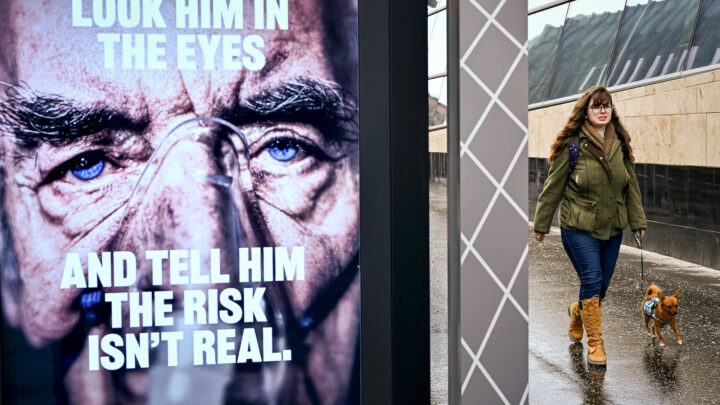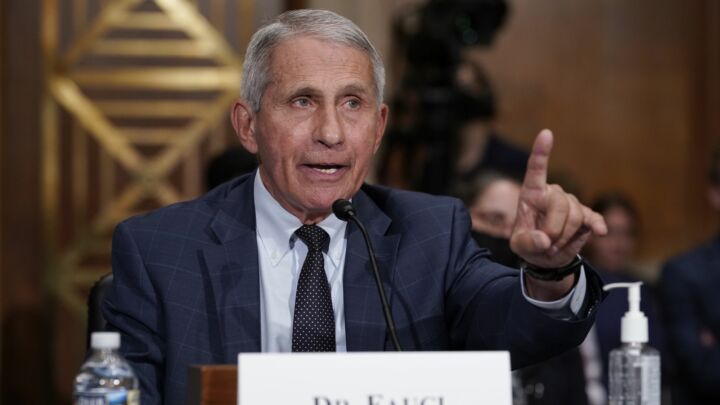Would the lockdowns have happened without Zoom?
The laptop class would never have survived without it.

Want to read spiked ad-free? Become a spiked supporter.
One of the central mysteries of the pandemic is why countries worldwide simultaneously decided to jettison a century of experience managing respiratory-virus pandemics, usually with an approach akin to the focussed-protection model proposed by the Great Barrington Declaration, in favour of lockdowns and school closures. While the cause is undoubtedly multifactorial, one of the underappreciated enabling factors is the availability of technologies like Zoom, which made lockdown economically manageable for one crucial subset of the population – the laptop class.
While video-conferencing technologies have been around for decades, it is only in recent years that they have matured to the point where white-collar, ‘knowledge economy’ workers could possibly conceive of using them to support a rapid and long-lasting shift from in-person to remote interactions.
In the first decade of the 21st century, while video-conferencing services like Skype did exist, they required broadband internet services that were not universally available even in developed countries. Those services were not designed for large companies or schools to deploy at scale while maintaining adequate security. Skype, from my own experience, was often glitchy for video, performed poorly when more than two people were calling in, and did not integrate seamlessly with calendar systems, which is essential to schedule meetings.
Online educational offerings were also available but typically consisted of poorly produced YouTube videos with little opportunity for direct and immediate instructor feedback. Similarly, you could call up for home delivery of food from pizza joints, but only a select few other restaurants offered this service. There was no DoorDash, Uber Eats, or other similar food-delivery services. The range of offerings on Amazon was paltry in comparison with today.
By 2020, all that had changed. A new array of online technologies and products, which enabled people to work, shop and order in using their computer or phone, allowed the laptop class to go into lockdown relatively comfortably. But this was not the experience of others, for whom lockdown brought significant pain.
Even today, with all these technological developments, the reality is that remote work cannot replace in-person work for most jobs worldwide. When the pandemic hit, about a third of American workers switched from in-office to remote work. University of Chicago economists Jonathan Dingel and Brent Neiman analysed a comprehensive database of job requirements in the US at the time, finding that only 37 per cent of American jobs had conditions that could permit them to be moved online with minimal impact on job productivity. The laptop class is also undoubtedly much smaller in poor countries.
How did workers outside the laptop class fare during the lockdowns? Not very well, according to research published by the US National Bureau of Economic Research in December 2021:
‘[T]he Covid-induced shift to remote work has devastated the service economy that had catered to elite workers’ needs. Urban neighbourhoods with more high-skill-service residents have seen larger population outflows and higher work-from-home numbers throughout the pandemic, as well as larger declines in visits to local consumer-service establishments and sharper drops in residents’ spending on consumer services. Low-skill consumer-service workers in big cities lost more hours per worker than their rural counterparts.’
In poor countries, lockdowns, which were recommended to them by the World Health Organisation, impoverished tens of millions of people. They caused mass unemployment and disrupted food production, ‘pushing tens of millions more people’ in the developing world into hunger. Indeed, in July 2020, the United Nations reported that 10,000 children per month were dying from starvation brought on by supply-chain disruptions. The devastating trend of significantly higher starvation-related deaths in developing countries will likely continue due to the ‘aftershocks’ of lockdown policies.
In March 2020, with only a few notable exceptions like Sweden, governments closed schools worldwide to ‘flatten the curve’ and slow the spread of Covid. For the first time in history, schools transitioned from in-person to online instruction. Schools stayed closed for a year and a half or longer in some places, like California, Uganda and India. When schools finally re-opened in Uganda in 2022, 4.5million children were lost from the education system, many forever.
While online education had been growing steadily as an industry in the decade before Covid, it still could not replace in-person schooling. During the pandemic, children missed out on crucial life and educational experiences. Predictably, catastrophic learning losses and psychological distress ensued. The adverse consequences were much worse for children from underprivileged backgrounds, putting them on a course that will further disadvantage them for the rest of their lives. School closures have accelerated income and social inequalities in already unequal societies. Meanwhile, richer parents supplemented Zoom school by hiring idle teachers to teach their kids in ‘pod schools’ – in-person teaching conducted in small groups – to blunt the worst harms of online education.
So, on the eve of the pandemic, thanks to Zoom and attendant technologies, a small but economically and politically powerful portion of the population was in a position to weather the lockdowns without losing their jobs and without too much harm to their children.
Members of the laptop class – typically among the wealthiest people in society – possess considerable political influence. They are overrepresented on social media and in the ranks of the conventional media. When the laptop class as a whole decided (with many individual exceptions, of course) that staying home and staying safe was a virtue, it became much more difficult for governments to resist lockdown.
So what would have happened if the pandemic hit without Zoom? We don’t have to go back very far in time to find out: the 2009 swine flu pandemic will suffice.
When swine flu hit in April 2009, public-health agencies raised the alarm. H1N1 influenza, the virus that causes swine flu, shares affinity with the virus that caused the deadly 1918 Spanish flu pandemic, which killed tens of millions of people worldwide. The World Health Organisation’s first officially published estimates of the case-fatality rate in May 2009 – derived from observations in Mexico and the United States – reported case-fatality rates as higher than two out of 100. Neil Ferguson and the Imperial College crew published their usual panic-mongering simulation model in a top medical journal. Unlike Covid, where over 80 per cent of the deaths have been among people over 65, swine flu preferentially killed non-elderly people. Eighty per cent of the deaths globally were among people under 65, including children.
The statements from public health during the early days of H1N1 mirrored those from the early days of Covid. Mexico cancelled football matches and briefly kept kids home from school. In the US, local public-health officials pushed hard to close schools, but came away frustrated because most school districts refused.
Public-health bodies – full of grand ideas from pandemic-planning exercises following the 2006 avian-flu scare – wanted tough measures, but they didn’t get them. The question is, why not? What materially differed between 2009 and 2020?
The obvious answer is that Covid turned out to be orders of magnitude deadlier than swine flu. But this fails to explain the difference in response because governments and public-health bureaucrats could not have known this early on in the respective histories of these pandemics. Another obvious answer is that many scientists in 2009 were confident that vaccines and effective antivirals would quickly become available to prevent and treat swine-flu infection. However, as happened with Covid, drug companies back then did not develop vaccines or roll them out at scale until almost nine months after the start of the swine-flu pandemic. And there was considerable controversy over the side-effects and effectiveness of the available antivirals like Tamiflu, even before a comprehensive Cochrane collaborative report demonstrated that the drug was largely ineffective. Given this history, none of these things explains why we locked down in 2020 but not in 2009.
The different profile of swine flu and Covid does not sufficiently explain the wildly different policy choices they prompted. For an explanation, we need to look at the economic consequences of the lockdowns – and which groups of people were in the best position to weather them when Covid arrived. That analysis leads us to the ineluctable conclusion that Zoom, and similar technologies, had a significant role to play here. They enabled an influential section of society to demand the previously unthinkable. The frightening corollary is that – unless there is concerted political action to prevent it – the next time there is a highly infectious, potentially dangerous respiratory virus afloat, we will lock down again.
Jay Bhattacharya is a professor of health policy at the Stanford University School of Medicine, a research associate at the National Bureau of Economic Research, and a founding fellow of the Academy of Science and Freedom at Hillsdale College.
Picture by: Getty.
Celebrate 25 years of spiked!
We are funded by you. And in this era of cancel culture and advertiser boycotts, we rely on your donations more than ever. Seventy per cent of our revenue comes from our readers’ donations – the vast majority giving just £5 per month. If you make a regular donation – of £5 a month or £50 a year – you can become a and enjoy:
–Ad-free reading
–Bonus content
–Exclusive events
–Access to our comments section
If you can, please support us on a monthly basis and make a big impact in support of open, independent journalism. Thank you.







Comments
Want to join the conversation?
Only spiked supporters and patrons, who donate regularly to us, can comment on our articles.